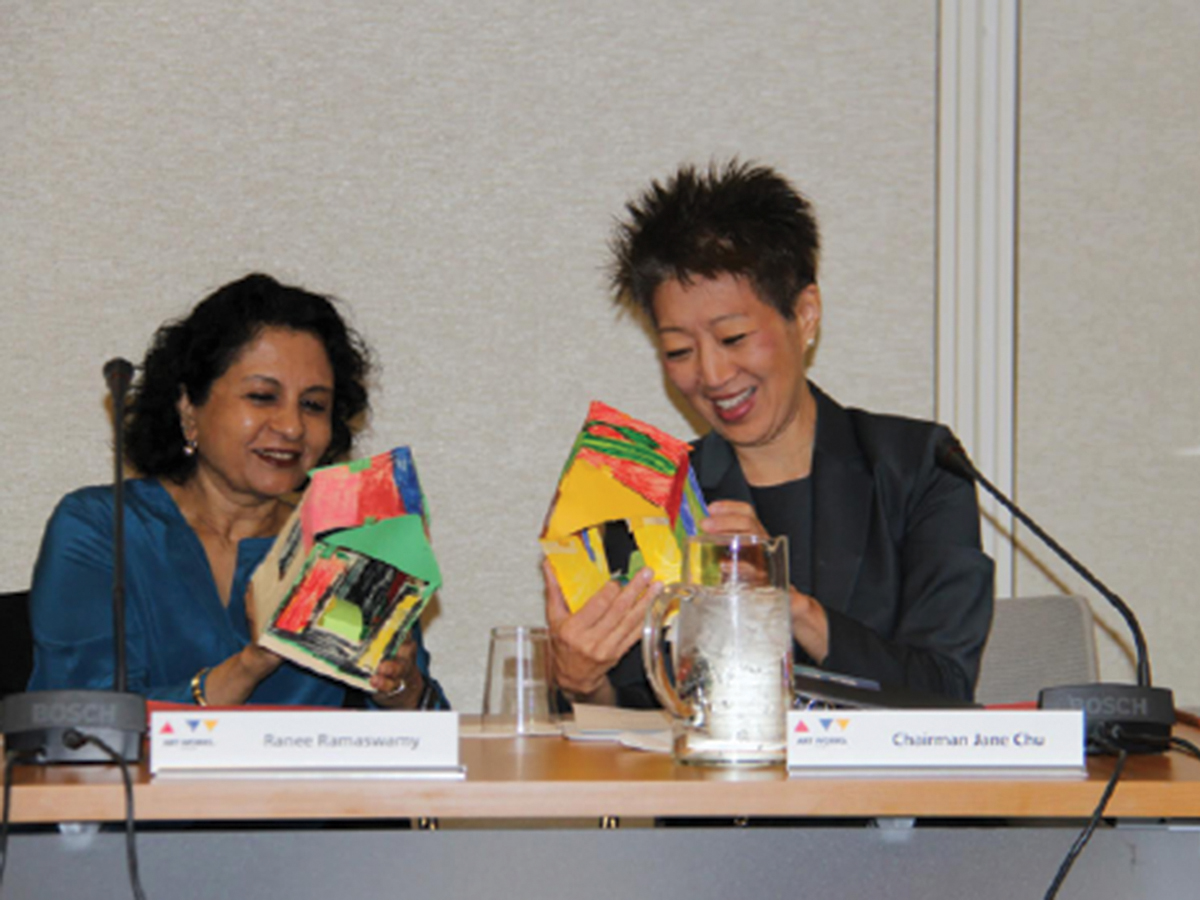
Construction Services
Have you ever noticed how we in the design fields sometimes approach a problem completely different from those whose educations are in other fields? For instance, have you noticed your architect dinner companion paying more attention to the molding details in a restaurant than what’s on the menu? Design professionals – have you ever almost driven off the road because you are craning your neck to check out a connection point high up on a structure? Well, if you are like me, you have.
I truly believe the creative disciplines of design education have a lot to do with it. How we perceive ourselves in the environment to how we interact with others, all stem from our design-based thought processes.
And I’m not alone. Employers in other fields are taking notice of creative training and seeing it as an asset for every kind of problem-solving. We are seeing a focus on the importance of including design thinkers in decision-making teams at the highest levels.
“It’s technology married with liberal arts, married with the humanities, that yields the results that make our hearts sing.” - Steve Jobs, Apple

“In the future, I see a role on every executive team for a designer – someone whose role it is to ensure that every element of the business is designed well, and designed holistically.” -Yves Béhar, founder, fuseproject.
Business schools like Harvard, Wharton, and MIT regularly teach courses in design thinking and innovative problem solving. But design thinking needn’t wait until college, and it’s certainly not limited to those studying at the Ivys. It’s a process approach to problem solving that can serve everyone, in every part of life, even children.
Children are great creative thinkers. And teaching them design thinking and problem solving in their classrooms is the mission of the Architecture Resource Center (ARC), a non-profit organization.1 The ARC creates hands-on K-12 classroom workshops and textbooks that teach the same process approach as the Ivys.
The ARC uses building and construction design activities as a way for students to apply the science, technology, engineering, and mathematics (STEM) being taught at their grade levels. It’s about teaching students the connection between what they learn in school and its application to the real world around them. And, most important, the ARC programs are inclusive. Every student benefits.
In addition to reinforcing and connecting STEM concepts to everyday life, students also collaborate, and in the process learn about themselves, their relationship to each other, their families, their community, and their environment. The ARC’s programs are developed in collaboration with academic scholars, and accredited design professionals, and have received awards from state, national, and international organizations as well as businesses. ARC has been operating in the greater-New Haven area, and throughout the state since 1991.
 Anna Sanko, ARC founder and executive director, was invited to introduce the ARC and present an example of its STEM-linked, in-class workshops at the National Council on the Arts in March. The invitation came from Jane Chu, chairman of the National Endowment of the Arts, who, as an ARC funder, observed a workshop in New Haven in 2015. Chu made a special request for Sanko to include the hands-on lesson for the council members.
Anna Sanko, ARC founder and executive director, was invited to introduce the ARC and present an example of its STEM-linked, in-class workshops at the National Council on the Arts in March. The invitation came from Jane Chu, chairman of the National Endowment of the Arts, who, as an ARC funder, observed a workshop in New Haven in 2015. Chu made a special request for Sanko to include the hands-on lesson for the council members.
Sanko is still passionate about the program now in its 26th year. She is a licensed interior designer, with more than 15 years of professional experience as a project manager at architecture and design firms.2 Sanko’s passion for teaching is born from her experience “We cannot diminish the importance of a partnership between those with vision and those with the skill to make that vision a reality.” What the students have to say sums it up! “It was fun because we all had jobs to do and we all worked together to make beautiful stuff.”
Footnotes
1arcdesigned.org. Architecture Resource Center Inc., 1221 Chapel St, New Haven, CT 06511, (860) 604-1074
ARC programs have been funded by more than $2,000,000 in grant awards from private, local, state, and national sources.
2Anna Sanko has a degree in Industrial Design from Pratt Institute in New York and a Master of Arts in Education from Goddard College in Vermont. Professionally, she has designed over 1 million s/f for national corporate, medical, school, government, retail, and industrial facilities. She is a CT Office of the Arts Master Teaching Artist and sits on the advisory board of DESIGN-ED, (design-ed.org), a national organization focused on creating standards and policy for design education in the U.S.
Tanya Cutolo, AIA LEED AP, is the director of business development for SLAM Construction Services. SLAM is a founding member of the Construction Institute at the University of Hartford (construction.org).







